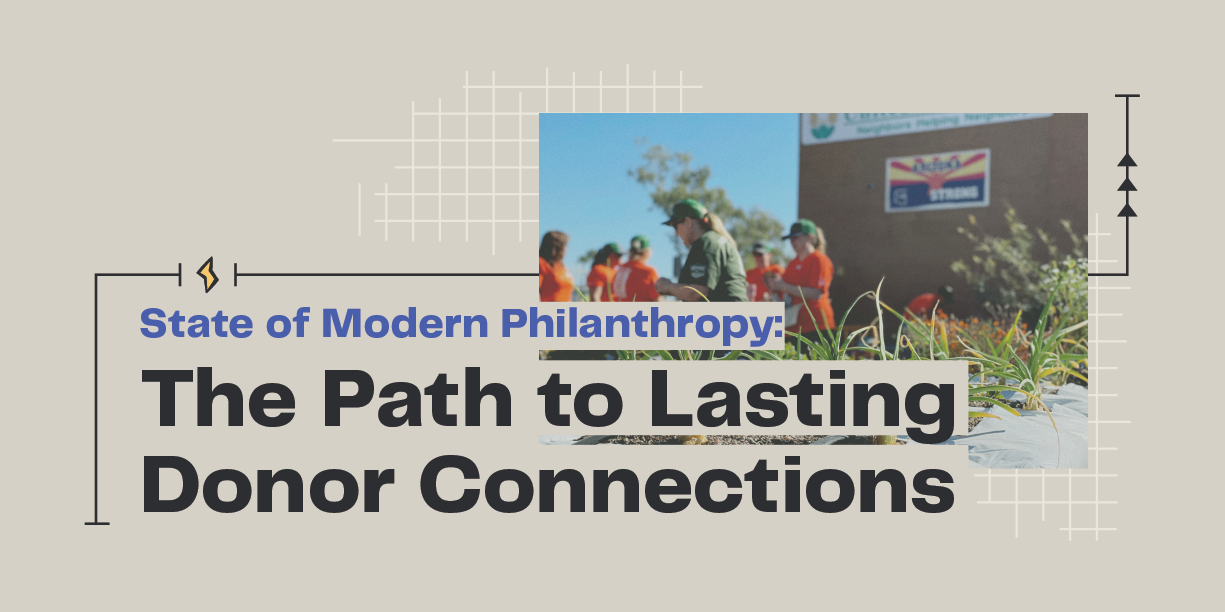The Psychology of Peer-to-Peer Giving

Peer-to-peer fundraising platforms are increasingly effective when it comes to scaling donations for nonprofits. We spoke to Otis Fulton, the vice president of psychology strategy at Turnkey, to further break down the psychology of peer-to-peer fundraising. Get our tips below to harness its power and turn your next peer-to-peer fundraising campaign into a success.
According to our newly released report, The State of Modern Philanthropy 2022, time-based campaigns that include peer-to-peer raise 3.8X more on average than all other time-based campaign types.
The efficacy of this type of fundraising boils down to the psychology underlying the peer-to-peer method. People could be inclined to give to a worthy cause, but they are often more immediately willing and likely to support their friends or family. Understanding these internal motivations can help you boost donations and grow your organization.
About Turnkey
Earlier this year, Classy hosted a webinar on The Psychology of Giving: Copywriting that Compels People to Give with Fulton, given his expertise and work at Turnkey. Turnkey helps mission-driven organizations acquire and nurture constituent relationships that result in sustainable revenue.
7 Steps to Harness the Psychology of Peer-to-Peer Giving
1. Focus on Identity
Identity and how people think of themselves is one of their main drivers of behavior. Most people have 6 to 10 aspects of their identity that are active at one time.
In other words, your organization has 6 to 10 potential ways to trigger a meaningful connection with donors. These points of identity could be everything from their jobs, family status, locations, interests, and more.
Consider how you can connect the act of supporting your cause with different elements of their identity or how they view themselves, whether you’re highlighting their generosity in your language or calling out their membership as a recurring donor. Then, given they will likely ask for donations from friends and connections who share similar identities, equip them with the tools to do so.
2. Understand Donor Motivations
Initial donations are typically based on emotion—almost like an impulse buy. However, these first emotions won’t sustain long-term giving. Donors will only likely continue taking action when you connect with their individual motivations.
[Sustained giving is] based on the supporter’s identity and their goals. Understanding this dramatically changes how you motivate them to take action.
The two most common motivations for giving are a feeling of connection to your organization and being able to see the impact of someone’s donations. Make sure your messaging relays and fulfills these factors as you ask for donations and for individuals to create personal fundraising pages.
People who view themselves as moral are also more likely to give. Use the following words in your messaging to remind people of these positive attributes and encourage them to donate:
- Kind
- Caring
- Compassionate
- Helpful
- Friendly
- Fair
- Hardworking
- Generous
- Honest
3. Leverage You-Centric Language
To market your peer-to-peer campaign, you need to both create your organization’s appeals and equip your fundraisers to promote their own efforts. The latter requires you to empower both the fundraisers and their contacts who might give.
Don’t make the mistake of only talking about your nonprofit. No one enjoys having a conversation with someone who only talks about themselves, so “The word ‘you’ is the most important word in a nonprofit appeal. The most successful nonprofit campaigns focus on you the supporter, not us the organization.
Shift your language to speaking about the donor. Make your supporters the heroes of the story. Remind them their support is key to the work you do.
4. Don’t Forget to Thank and Report
Nonprofits who raise a lot of money get really good at thanking and reporting. They thank people a lot. But too many organizations neglect these two steps.
Otis mentioned the reason most donors stop giving is that they were never thanked for a gift or asked to donate again.
Prioritize retention and create a thorough follow-up strategy thanking supporters. In addition to thanking them, provide information on the impact of their donation and what it’s helped accomplish in the field.
5. Pay Attention to Readability
Your challenge as a fundraiser is connecting with a wide audience and making your appeals feel personal. Effectively navigating that tension boils down to how you position your language to connect with people. You’ll want to ensure all of your appeals are easily understood by your audience to remove any potential barriers to giving.
In other words, pay attention to readability. One of the most common readability measures is the Flesch Reading Ease, which is on a scale of 1 to 100. Lower Flesch Reading scores equate to easier readability.
Fulton recommends aiming for a Flesch score of 50 or less and maintaining a reading grade level between fifth and eighth grade. Luckily for you, measuring both scores come built into Microsoft Word or can be accessed using free online tools.
People are busy and distracted, and they might skim quickly. Therefore, keep your writing short and simple. Use active verbs and create a sense of urgency to hold people’s attention—at least long enough for them to understand your message.
6. Invite the Audience Into the Cause
The purpose of nonprofit messaging is not to inform. It’s to make people feel something.
People respond when we cause them to feel an emotion. Use language and visual mediums to connect with donors emotionally, and make the call to action clear with strong verbs. Personalize the language to remind them that they’re helping other people.
You-centric language helps show their vital role in your mission. Try using more of the phrase “because of you” to show how donors enable and empower your nonprofit to achieve success. When they understand their role, they’re more likely to take it seriously.
7. Remember Your Purpose
Each message of your peer-to-peer campaign doesn’t always need a call to action. Sometimes a simple thank you goes a long way in making an impression and helping them feel special.
The purpose of your messaging isn’t to raise money, it’s to make people happy. If you’re in donor communications, your real job is to give people’s lives a sense of purpose in exchange for their support.
Fundraising isn’t rocket science, but it is a social science. It requires knowing people and understanding how they work. Your brand is not what people know about your organization. It’s how you make them feel.
Make the Most of Your Peer-to-Peer Giving
Remember that people give to other people and because of how it makes them feel. They’re also more likely to be motivated to give when asked by people they already know.
When you make donors and fundraisers feel like an important part of your organization, they’re more likely to continue giving. Empower supporters and make them feel appreciated, and see how that positively impacts your results.

See How Peer-to-Peer Giving Is Trending



